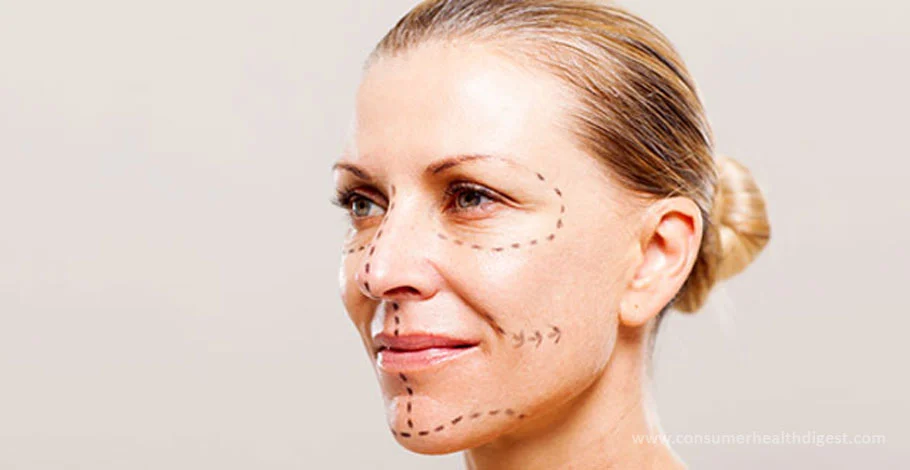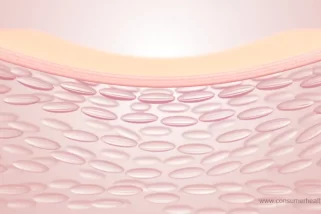In This Article
What is Face Lifting
Facelift surgeries (also referred to as a rhytidectomy) are a common practice in the cosmetic industry. The skin is pulled back to achieve a tighter, smoother finish – setting back the clock on your face. [1]

The intention of the procedure is to reduce the elasticity of the skin on the portions of the face where the skin naturally sags with age or sun damage. This is usually considered the jowls and the skin of the neck.
So, why do so many people get a facelift? And what does it entail?
This article takes you through the process of facelifts, to give you the information you need, whether you are seriously considering the procedure, or are simply curious.
Why Get One?
The common goal of many who make the decision to receive a facelift is to make themselves appear younger. A typical facelift lasts approximately a decade, and many insist it makes them look at least a decade younger. For many, it's a way to press pause on your prime years, and keep or boost your sense of self-confidence and maintain pride in your appearance. A facelift is one of the best ways to make yourself look refreshed and younger without looking like you've had excessive work done. [2]
Fillers and Botox have been criticized in recent years for being so obvious and looking fake, as well as having impacts on your health, but a facelift provides a much more natural, less dramatic effect on your face. [3]
In terms of longevity, Botox only lasts 3-6 months, so you'll also need to deal with regular maintenance, unlike a facelift. [4]
As for fillers, it depends on the type you get. Typical dermal fillers tend to last 6-12 months, but there are some that can last 2-5 years. Fillers obviously have a longer lifespan than Botox, but again much shorter than a facelift. If you're looking at it from a cost standpoint, those repeated visits really start to add up. [5]
Make Sure Your Expectations are Realistic
It's important that before you actually get the procedure done that you give thought to your expectations. There are realistic expectations and unrealistic ones. Yes you will notice a difference in your face, and you're bound to look more youthful, but it's not necessarily going to be a cure for a lack of self-confidence. Think of it as a boost to your confidence, rather than the cure.
As well, it's important to understand that while a facelift can offer some pretty drastic and beautiful results, it cannot change such things as your bone structure and your cartilage. Being aware of this will help ensure your expectations are realistic.
Often people go in with the idea that they want to look like a certain celebrity, model, or star, and the fact is that each face is unique so it's not possible to get someone else's “exact” look. You will look different after your facelift, but it will be your own unique results.
What is The Nitty Gritty Operation?
To avoid problems, look for a practice such as SpaMedica, with years of experience, who offer professionally delivered procedures and great advice for those who are intrigued. [6]
For the squeamish, you might want to read ahead, but for those of you who are curious about the operation itself, it's actually a very graceful process. There are various types of facelifts, but commonly the doctor will make small incisions around the face, depending on what is being ‘lifted'. Around the temples, under the chin, behind the ear, and underneath the earlobes are typical and innocuous areas that may be cut. From there, the extra skin is removed, and the remaining skin is pulled back and up and attached to the areas of the original incision. Finally, the face is wrapped in bandages to reduce swelling, and the patient is looked after overnight.
In general, the facelift will address the bottom two-thirds of your face and sometimes your neck - depending on your expectations, skin, and so forth.
What Does Recovery Look Like?
Recovery time for a neck lift always depends on the individual, but the average time span for a full facelift recovery is between two and four weeks. If you work full time, you will need to take time off. Fair warning – there will be some intense bruising for the first couple of weeks! This is temporary though, and stitches are normally removed after a week. You should keep your head elevated for the first few days to reduce the swelling, don't move around too much, and try not to get the bandages wet. An in-depth look at recovery can be found here. [7]
Just like with any facelift surgery, there are some risks that can occur, but these will be discussed by the doctor ahead of time. They will also make sure you are aware of what to look for and what to monitor during your facelift healing process.
In terms of how soon you'll see results from the procedure; that actually takes a few months. All of the swellings needs to go down, which can take a while to completely disappear. At that point, you'll get a true sense of the final results.
Read also - Cosmetic Treatments To Consider Before The Big Trip
How to Extend the Lifespan of Your Facelift
Each person is unique and results will vary of course, but there are some steps you can take moving forward that will help to prolong and extend the lifespan of your facelift. The most important is to be sure that you are wearing adequate SPF sun protection. Extra steps like wearing a hat while in the direct sun are also wise. This doesn't just extend your facelift results it also helps to protect your skin from sun damage.
You will also want to be sure you get into the habit of a good skincare regime that includes a high-quality best face moisturizer. You want to keep the skin hydrated and moisturized. A well-balanced healthy diet will also provide beneficial results.
Hopefully, this article has provided you with some key advice and facts to inform your journey with facelifts.
7 Sources
We review published medical research in respected scientific journals to arrive at our conclusions about a product or health topic. This ensures the highest standard of scientific accuracy.
[1] Rhytidectomy (Face-Lift Surgery): https://jamanetwork.com/journals/jama/fullarticle/2718070[2] Facelift, Mini Facelift, & Neck Lift: https://healthcare.utah.edu/plasticsurgery/facial/facelift-midlift-necklift.php
[3] Cable MM. On the front lines: What's new in botox and facial fillers. Mo Med. 2010;107(6):379-382.
[4] 3 Reasons Why Your Botox Treatment Is Not Lasting As Long As You Expected: https://refinemdnw.com/3-reasons-why-your-botox-treatment-is-not-lasting-as-long-as-you-expected/ [5] Injectable Dermal Fillers Guide | ABCS: https://www.americanboardcosmeticsurgery.org/procedure-learning-center/non-surgical/injectable-fillers-guide/
[6] Facelift (Rhytidectomy) in Toronto: https://www.spamedica.com/surgical-procedures/face/facelift/
[7] Your facelift recovery explained from Day 1 to Day 30 : https://www.plasticsurgery.org/news/blog/your-facelift-recovery-explained-from-day-1-to-day-30






